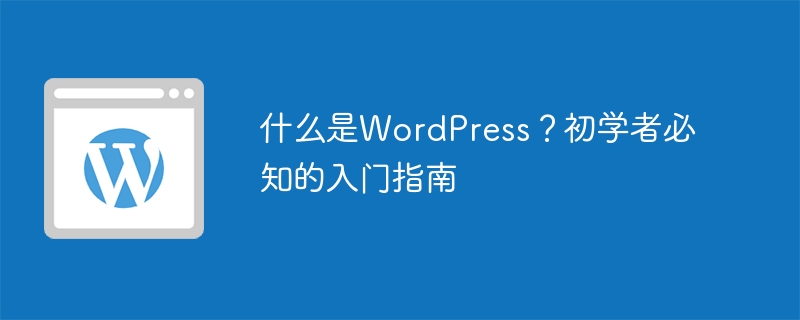

WordPress is an open source content management system (Content Management System, CMS for short) and one of the most popular website construction platforms currently. It provides a wealth of plug-ins and themes that allow users to easily create and manage various types of websites, including blogs, business websites, news websites, and more. For beginners, it is very important to understand the basic knowledge and introductory guide of WordPress. Below we will introduce the introductory guide that beginners must know from the aspects of what WordPress is, how to install WordPress, how to use WordPress, etc.
1. What is WordPress?
WordPress started out as a blogging platform and has evolved into a powerful website building tool. Users can easily create and manage website content through WordPress, including articles, pages, images, etc. The interface of WordPress is simple and intuitive, and you can complete the website construction without writing code, so it has been widely welcomed and used.
WordPress has the following characteristics:
2. How to install WordPress?
3. How to use WordPress?
To sum up, WordPress is a powerful and easy-to-use website building tool suitable for all types of users. By understanding the basic knowledge of what WordPress is, how to install WordPress, and how to use WordPress, beginners can quickly get started and build their own website. I hope this article’s introductory guide can help beginners better understand and use WordPress.
The above is the detailed content of What is WordPress? A must-know guide for beginners. For more information, please follow other related articles on the PHP Chinese website!
 Blue screen code 0x000009c
Blue screen code 0x000009c
 A collection of common computer commands
A collection of common computer commands
 You need permission from admin to make changes to this file
You need permission from admin to make changes to this file
 Tutorial on turning off Windows 11 Security Center
Tutorial on turning off Windows 11 Security Center
 How to set up a domain name that automatically jumps
How to set up a domain name that automatically jumps
 What are the virtual currencies that may surge in 2024?
What are the virtual currencies that may surge in 2024?
 The reason why header function returns 404 failure
The reason why header function returns 404 failure
 How to use js code
How to use js code




